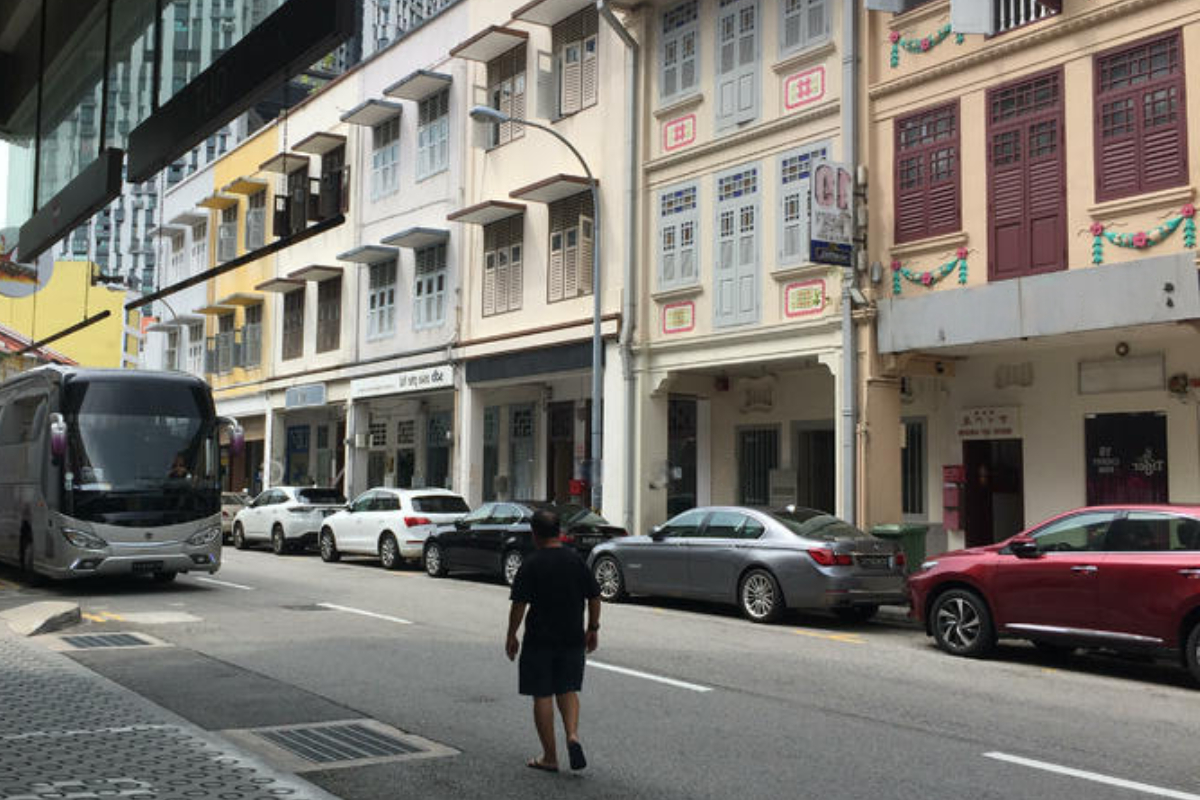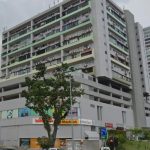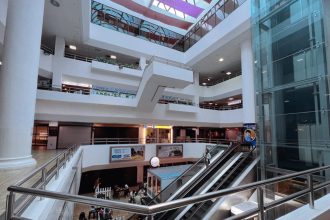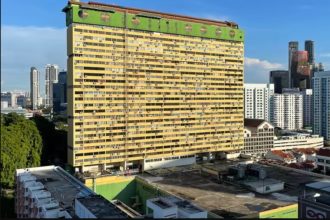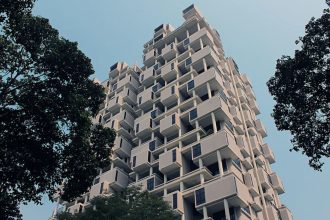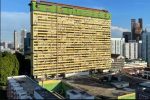Key takeaway
Bukit Pasoh Road became Singapore’s heritage district because it combined strong clan associations, discreet social layers labelled “Mistress Street”, and fine conservation of its shophouses. The result is a street where community bonds, architecture, and layered history converge. Today, visitors can see the living traces of these networks alongside restored buildings that host contemporary businesses, events, and cultural programs.
Strolling up a gentle incline in the heart of Chinatown, you are surrounded by carefully restored two‑ and three‑storey shophouses in Art Deco and transitional styles. This is Bukit Pasoh Road, a hill once filled with pot kilns, then clan halls, and now a heritage corridor of stories and structure. Alongside the architecture, the street hums with cafés, galleries, and boutique lodgings that echo the lives of its past inhabitants.
Origins: From kilns to clan networks
The name “Bukit Pasoh” means “hill of flower‑pots” in Malay, recalling the kilns that produced large clay vessels here. Over time, the area drew an array of Chinese immigrants who set up social clubs, clan associations, and welfare networks. Many of these organisations clustered here, earning the stretch the moniker “Street of the Clans”. The kilns were not only commercial hubs but also became symbols of the street’s evolving craft economy, which supported early migrant families.
Clan associations anchored community life along Bukit Pasoh Road
The surviving associations on Bukit Pasoh Road tell a story of continuity. As you walk the street, you might also sense its link to broader heritage zones, and catch a lively scene at the nearby largest hawker centre, which keeps tradition alive in daily communal terms. Many associations still host events for cultural education, maintaining old practices while fostering new community bonds.
Ee Hoe Hean Club at 43 Bukit Pasoh
Founded in 1895 by Hokkien business leaders, this club became a hub for political, social, and business activity during colonial times. It hosted debates, fundraisers, and overseas trade missions, highlighting how local leadership extended beyond Singapore’s borders.
Chin Kang Huay Kuan at 27‑29 Bukit Pasoh
Established in 1918 to support immigrants from Jinjiang (Fujian), this group later expanded into youth and women’s welfare work. Its presence here reflects how clans shifted from mutual aid to community development. Annual festivals and educational programs continue to strengthen connections with younger generations.
Siong Leng Musical Association at 2 & 4 Bukit Pasoh
This music society preserves the centuries‑old traditions of Nanyin and Liyuan opera in Singapore. Its home on Bukit Pasoh connects cultural performance with the clan landscape of the street. Performances often coincide with local temple events, bringing music into public life in ways that honor heritage.
Other clan bodies: Koh & Yee
The Koh Clan Association (15 Bukit Pasoh Road) runs bursaries and festivities. The Yee Clan Association (9 Bukit Pasoh Road) supports members from Taishan and the surrounding Guangdong regions. These groups show that the “street of clans” label still has meaning, as ceremonial events and ancestral rites keep the lineage visible on the street.
The “Mistress Street” dimension
Bukit Pasoh Road’s history also includes an undertone of private lives: during parts of the 20th century, some shophouses hosted mistresses of wealthy men. This side of the street’s reputation sits alongside its public‑facing associations, illustrating the street’s multi‑layered social history.
Nearby old lanes, such as Keong Saik Road, shared similar reputations, both cultural and social. In this light, Bukit Pasoh’s dual identity of solidarity and secrecy becomes clearer. Walkers may notice discreet signage and subtle architectural cues hinting at this hidden social past.
Bukit Pasoh Road: architectural character and conservation
The area around Bukit Pasoh was gazetted as a conservation district on 7 July 1989. The street is bounded by New Bridge Road, Keong Saik Road, Kreta Ayer Road, Neil Road, and Cantonment Road. It features two‑ and three‑storey shophouses mostly in transitional, late, and art‑deco styles. Restoration projects often focus on retaining original timber doors, pilasters, and decorative tiles, preserving the street’s visual cohesion while allowing adaptive reuse.
A transformation into a creative heritage district
In recent decades, the shophouses of Bukit Pasoh Road have found new uses. Boutique stays, cafés, design studios, and restored clubhouses share space with still‑active clan associations. One compelling example is the row at 31‑37 Bukit Pasoh, which was restored as a boutique hotel and then a members’ club, bridging past and present.
At the same time, local festivals and design walks help enliven the street’s heritage, illustrating how culture and architecture can combine. For another heritage walking choice, just a short distance away, you see Linear Park in Chinatown, which uses an old rail alignment in the same neighbourhood.
A short walking tour of Bukit Pasoh Road
Exploring Bukit Pasoh Road on foot allows visitors to experience its layered history and vibrant cultural life. Each stop on this short route offers insight into the social, architectural, and artistic heritage of the street.
- Start at Ee Hoe Hean Club (43 Bukit Pasoh Road) and view its Pioneers’ Memorial Hall. Take time to appreciate the historic interiors and learn how Hokkien business leaders shaped both local and overseas networks during the colonial period.
- Pass by Siong Leng Musical Association (2 & 4 Bukit Pasoh) and consider the centuries‑old music traditions maintained here, including Nanyin and Liyuan opera. The performances and preserved instruments reflect the rich intangible heritage of the street.
- Visit Chin Kang Huay Kuan (27‑29) for a glimpse into the welfare and community work of the clans. Notice how its façade and internal layout convey both functional and ceremonial purposes, supporting generations of immigrants.
- Finish at the restored shophouse row 31‑37 Bukit Pasoh to feel how architectural conservation meets modern adaptation. Here, boutique hotels, design studios, and club spaces coexist, demonstrating how heritage structures can be creatively repurposed for contemporary use.
Along the way, pause to notice intricate plasterwork, timber shutters, and vintage signage that tell stories of Bukit Pasoh’s social life and evolving urban identity. The street itself acts as a living museum, where every corner has a tale to tell.
Quick cultural fast‑facts about Bukit Pasoh Road
Bukit Pasoh Road may be a short street, but its history is dense and layered. These fast facts highlight the cultural, architectural, and social significance that make this heritage corridor a unique destination in Singapore.
- The name refers to clay‑pot kilns that once stood on the hill, giving the street its Malay moniker “hill of flower‑pots”.
- Nearly 30 clan associations once clustered on Bukit Pasoh Road, forming a hub for social, political, and mutual aid networks among early Chinese immigrants.
- The street also carried the hidden reputation of “Mistress Street”, reflecting the private lives of some residents alongside its public associations.
- It was officially gazetted for conservation in 1989, ensuring that its architectural and cultural heritage would be preserved.
- Architectural styles include Transitional, Late‑, and Art‑Deco shophouses, often featuring ornate plasterwork, timber windows, and decorative tiles.
- Annual heritage festivals celebrate both architecture and cultural practices, drawing locals and tourists to explore the street’s rich history.
- Some shophouses now house boutique cafés, galleries, and small museums, preserving artifacts and sharing stories of Bukit Pasoh’s past.
- The street’s design, with narrow lanes and stepped terraces, encourages pedestrian exploration, connecting visitors with its historic ambiance.
Key heritage sites overview
| Building | What makes it special | Nearest MRT | Notes |
|---|---|---|---|
| Ee Hoe Hean Club (43 Bukit Pasoh Road) | Founded in 189,; business and political hub for the Hokkien community | Outram Park MRT | Still active club and memorial hall |
| Siong Leng Musical Association (2 & 4 Bukit Pasoh) | Preserves Nanyin and Liyuan opera traditions | Outram Park MRT | Cultural association in historic shophouse |
| Row at 31‑37 Bukit Pasoh Road | Restored shophouses now a boutique hotel/club; references “Mistress Street” past. | Outram Park MRT | Good example of adaptive reuse |
Shared history and cultural identity of Bukit Pasoh Road
Bukit Pasoh Road matters because it shows how architecture, community networks, and quiet stories of social life come together in a compact street. Its shophouses and clubs remind us that Singapore’s heritage is not only in grand monuments but also in everyday spaces of gathering, conversation, and care. Walking the street, one can sense the layers of history, from the clay‑pot kilns and clan halls to boutique cafés and modern creative spaces, that have shaped its unique character over more than a century.
Today, Bukit Pasoh Road continues to serve as a bridge between past and present, where cultural events, festivals, and educational programs bring the community together while honoring its heritage. Visitors can experience how historic conservation, community memory, and adaptive reuse coexist harmoniously in this vibrant neighborhood.
For additional context on its historic environment, the street and its surroundings are documented in the heritage district history, offering further insight into the enduring significance of this remarkable street.
